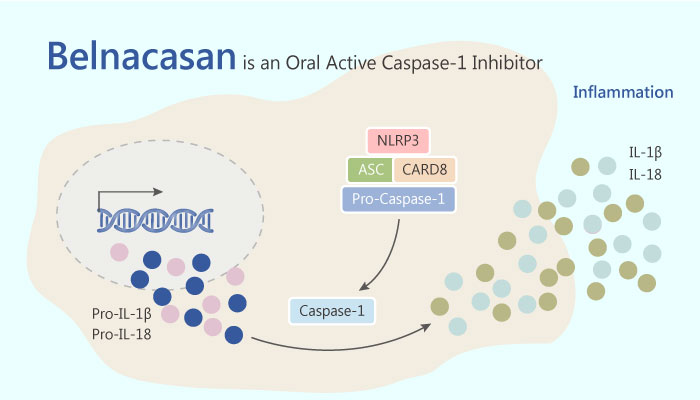Familial cold autoinflammatory syndrome is a condition that causes episodes of fever, skin rash, and joint pain after exposure to cold temperatures. In people with familial cold autoinflammatory syndrome, the most common symptom that occurs during an episode is an itchy or burning rash. Familial cold auto-inflammatory syndrome characterizes by mutations in the CIAS1 gene that encodes cryopyrin. Especially, cryopyrin is an adaptor protein involved in activation of IL-converting enzyme/caspase-1. Besides, cryopryin is an adaptor protein expressed in immune cells that contains at least three well-known protein-protein interaction domains. Cryopryin includes a pyrin domain, a nucleotide binding site (NBS) domain, and a leucine-rich repeat domain. The pyrin domain and NBS domain associate with two adaptor proteins. As a result, these proteins, in turn, bind the IL-converting enzyme (ICE)/caspase-1 through caspase recruitment domain (CARD)-domain interactions.
The association of all of these proteins forms a multi-protein inflammasome. The progress involves the proteolytic activation of ICE/caspase-1 in monocytes/macrophages, resulting in IL-1β and IL-18 production and subsequent activation of immune responses. Belnacasan (VX-765) is an orally active IL-converting enzyme/caspase-1 inhibitor. Belnacasan inhibits the release of LPS-induced IL-1β and IL-18 by human peripheral blood mononuclear cells with an IC50 of 0.7 μM. Moreover, Belnacasan reduces inflammatory response in murine models of inflammatory disease. Belnacasan also blocks IL-1β secretion with equal potency in lipopolysaccharides (LPS)-stimulated cells from familial cold autoinflammatory syndrome and control subjects.

All in all, VX-765 is the orally available prodrug of a potent and selective competitive inhibitor of ICE/caspase-1. VX-765 blocks the hypersensitive response to an inflammatory stimulus in monocytes from familial cold autoinflammatory syndrome.